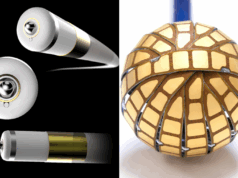Cardiome announced on 7 October the publication of positive data from an observational, retrospective study performed at the Skane University Hospital in Malmö, Sweden.
The study included 251 recent-onset atrial fibrillation patients who received 355 Brinavess treatments during the period between 15 January 2011 and 15 April 2013. During the observation period, 70% of the atrial fibrillation patients treated with Brinavess converted with a median time of 11 minutes. Conversion efficacy was 76% in patients with atrial fibrillation duration <10 hours. The median time spent in the emergency room for patients who converted on Brinavess was 6.5 hours. These results are published in the October 2013 issue of The European Journal of Cardiovascular Medicine.
“It is exciting to see that patients treated in the clinically critical first 48 hours after atrial fibrillation onset appear to continue to derive better-than-expected benefit from Brinavess and that they also prefer this therapy over DC cardioversion,” states William Hunter, chief executive officer of Cardiome. “The high conversion efficacy coupled with short hospital stay we believe makes Brinavess a practical option for physicians and patients who value rapid relief from atrial fibrillation.”
“Skane University Hospital developed a ‘fast-track’ atrial fibrillation programme in the emergency room where patients with short duration atrial fibrillation were promptly treated with Brinavess, which likely contributed to the higher efficacy seen in this setting compared to the ACT and AVRO clinical trials,” states Steen Juul-Möller, the study’s principal investigator and Cardiome’s medical director. “The finding that 75% of successfully treated Brinavess patients remained in normal sinus rhythm after a one-year follow-up period was an extremely interesting and important finding that requires further investigation,” added Juul-Möller.
Patients with recent-onset atrial fibrillation and whom cardioversion was considered were evaluated for Brinavess treatment. Over the period of the study, 251 patients received 355 treatments.
In all patients, 70% of Brinavess treatments were successful and 70% of the patients responded at least once with conversion to sinus rhythm. The conversion rate was higher at 76% among patients with atrial fibrillation duration <10 hours compared to 66% in those with atrial fibrillation >10 hours (p<0.05). Transient bradycardia and hypotension were seen in five patients (1.4%) occurring within minutes after conversion and were judged as a response to the change in heart rhythm. No ventricular tachyarrhythmias, including torsade-des-pointes were seen.
Those patients who did not respond to Brinavess treatment were subsequently treated with DC cardioversion. All patients who had experienced both Brinavess and DC cardioversion were given a questionnaire to assess cardioversion preference and were followed up for a maximum period of 27 months (Brinavess [n=156]; DC cardioversion [n=91]). Among those who converted with Brinavess, 72% would prefer this treatment, in patients who did not convert with Brinavess, 61% said they would prefer DC cardioversion if they experienced a relapse (p<0.001). Furthermore, among Brinavess responders, 78% were satisfied or very satisfied with the treatment. In the follow-up portion of the study, after 12 months, 75% of Brinavess responders were still in sinus rhythm, compared to 45% of patients that required DC cardioversion (p<0.001).









